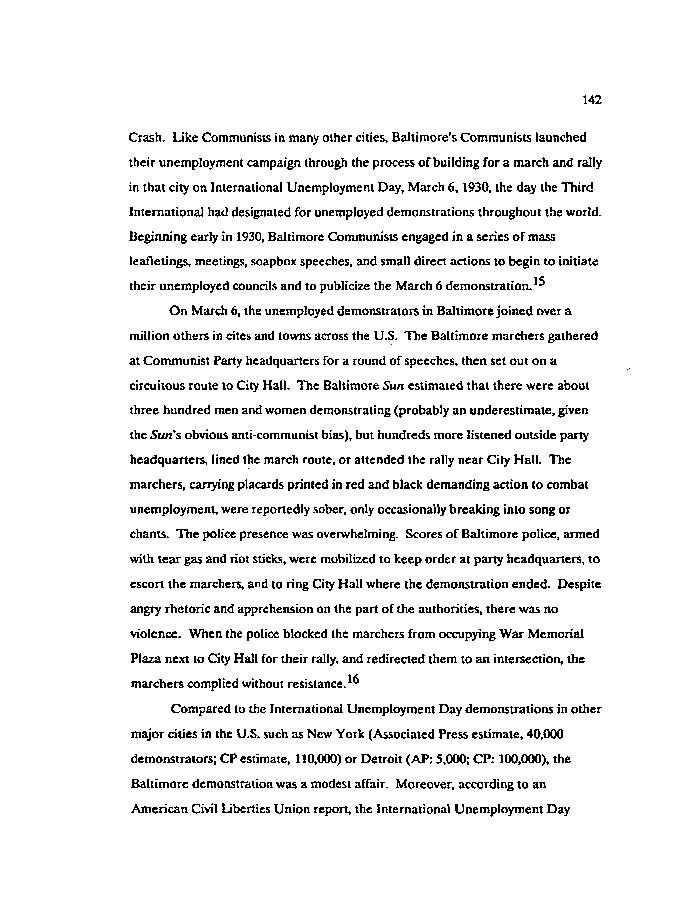|
142
Crash. Like Communists in many other cities, Baltimore's Communists launched
their unemployment campaign through the process of building for a march and rally
in that city on International Unemployment Day, March 6,1930, the day the Third
International had designated for unemployed demonstrations throughout the world.
Beginning early in 1930, Baltimore Communists engaged in a series of mass
leafletings, meetings, soapbox speeches, and small direct actions to begin to initiate
their unemployed councils and to publicize the March 6 demonstration.
On March 6, the unemployed demonstrators in Baltimore joined over a
million others in cites and towns across the U.S. The Baltimore marchers gathered
at Communist Party headquarters for a round of speeches, then set out on a
circuitous route to City Hall. The Baltimore Sun estimated that there were about
three hundred men and women demonstrating (probably an underestimate, given
the Sun's obvious anti-communist bias), but hundreds more listened outside party
headquarters, lined the march route, or attended the rally near City Hall. The
marchers, carrying placards printed in red and black demanding action to combat
unemployment, were reportedly sober, only occasionally breaking into song or
chants. The police presence was overwhelming. Scores of Baltimore police, armed
with tear gas and riot sticks, were mobilized to keep order at party headquarters, to
escort the marchers, and to ring City Hall where the demonstration ended. Despite
angry rhetoric and apprehension on the part of the authorities, there was no
violence. When the police blocked the marchers from occupying War Memorial
Plaza next to City Hall for their rally, and redirected them to an intersection, the
marchers complied without resistance. "
Compared to the International Unemployment Day demonstrations in other
major cities in the U.S. such as New York (Associated Press estimate, 40,000
demonstrators; CP estimate, 110,000) or Detroit (AP: 5,000; CP: 100,000), the
Baltimore demonstration was a modest affair. Moreover, according to an
American Civil Liberties Union report, the International Unemployment Day
|

